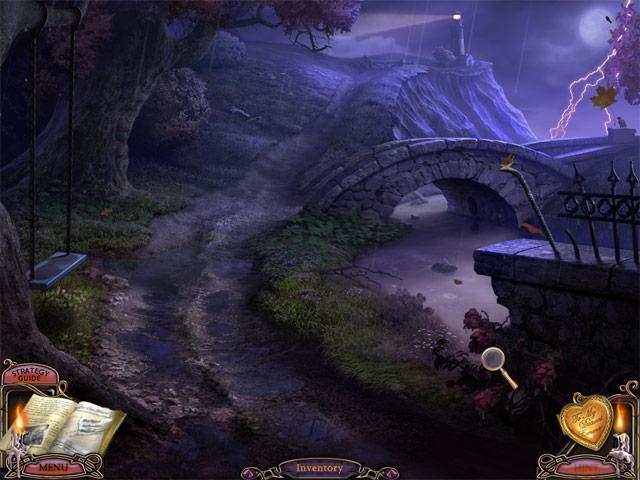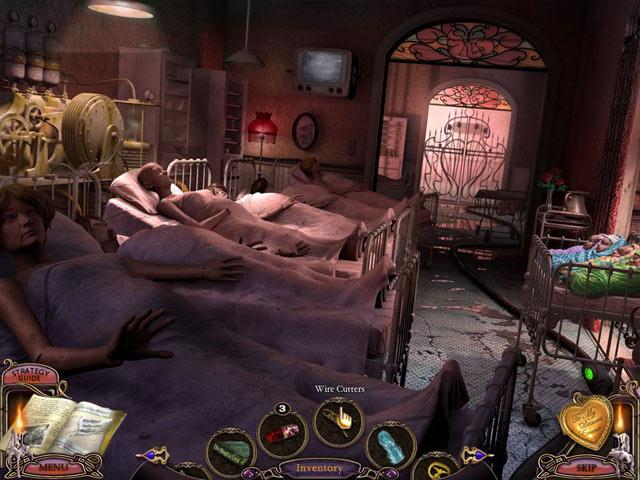- Wondering how to get Monopoly GO! free rolls? Well, you’ve come to the right place. In this guide, we provide you with a bunch of tips and tricks to get some free rolls for the hit new mobile game. We’ll …
Best Roblox Horror Games to Play Right Now – Updated Weekly
By Adele Wilson
Our Best Roblox Horror Games guide features the scariest and most creative experiences to play right now on the platform!The BEST Roblox Games of The Week – Games You Need To Play!
By Sho Roberts
Our feature shares our pick for the Best Roblox Games of the week! With our feature, we guarantee you'll find something new to play!Type Soul Clan Rarity Guide – All Legendary And Common Clans Listed!
By Nathan Ball
Wondering what your odds of rolling a particular Clan are? Wonder no more, with my handy Type Soul Clan Rarity guide.
Mystery Case Files: Escape from Ravenhearst Review
You went to Ravenhearst; you Returned to Ravenhearst; now it’s time to Escape From Ravenhearst once and for all in the new Mystery Case Files game that once again places you in the clutches of homicidal headcase Charles Dalimar. This time around it’s all about figuring out what makes ol’ Chuck tick, by way of a chilling, disturbing and occasionally even downright disgusting trip through his deeply warped childhood.

Mystery Case Files: Escape from Ravenhearst is a polished, yet disturbing adventure.
You went to Ravenhearst; you Returned to Ravenhearst; now it’s time to Escape From Ravenhearst once and for all in the new Mystery Case Files game that once again places you in the clutches of homicidal headcase Charles Dalimar. This time around it’s all about figuring out what makes ol’ Chuck tick, by way of a chilling, disturbing and occasionally even downright disgusting trip through his deeply warped childhood.
Mystery Case Files: Escape From Ravenhearst has come a long way from its hidden object roots. In fact, the new MCF game includes only one hidden object scene, with gameplay instead built around “changing object scenes” which require you to pick out the dozen or so parts of a hidden-object-style image that metamorphosize, briefly, into different objects or shapes. It’s unusual and has a whiff of “change for its own sake” about it, as though the creators went with it not because it was better or more interesting but it simply to get away from the old, well-used hidden object mechanic.

Full credit to them for trying something different, and of course it’s entirely a matter of taste, but sitting and waiting to catch a glimpse of movement on the screen doesn’t strike me as particularly “fun,” especially when it needs to be done repeatedly over the course of the entire game. Making it worse is the fact that some of these changing objects are tiny and extremely difficult to detect unless you happen to be staring directly at them when they shape-shift.
Escape From Ravenhearst is also packed with deviously difficult puzzles. A few were almost completely indecipherable, and one multi-part mess made absolutely no sense to me even after I saw the solution. These are the sorts of brain-teasers that are made for, and best enjoyed by, determined sleuths who don’t mind lingering over a problem and blowing an entire day’s session on solving a single puzzle. There’s a powerful feeling of accomplishment that comes from figuring them out on your own, but be prepared to sink some serious time and brainpower into doing it. For those lacking either or who just want to get on with the story, all puzzles can be skipped immediately, without any forced wait times.
As we’ve come to expect from the Mystery Case Files games, Escape From Ravenhearst is technically superb. The graphics are as good as any game out there, the music is excellent and the numerous live-action video clips are smoothly integrated and really bring the game to life. Most of the acting is fairly pedestrian, but Dennis Kleinsmith as Charles Dalimar deserves special mention for his fantastically over-the-top job as a seriously demented lunatic. His plaintive need for you to “understand” him almost makes Dalimar a sympathetic character, at least until you remember that whole crazy, evil, mass murder thing.

Speaking of demented lunacy, Escape From Ravenhearst is one of the the darkest and most disturbing “casual” adventure I’ve ever played. The maternity ward is a real treat and mama’s house may leave you scarred for life, and if the rest of the game seems not all that terribly awful it’s only because of those few special moments that leave you numb to everything else. It’s not just thematically dark, it’s also straight-up grotesque in parts, and gamers with a distaste for on-screen unpleasantness might be a little put off – or a lot put off – by some of the things they’ll have to do on the way to solving the mystery.
The game’s biggest failing is the “case book,” the in-game journal which does a fine job tracking the story as it unfolds but, unlike similar diaries in other games, does absolutely nothing as far as recording clues, forcing you to either take your own notes by hand or do a lot of running back and forth to refresh your memory about a forgotten name or number. For a game so reliant on clue-based puzzles it’s a very odd and annoying oversight.
The built-in strategy guide can be a little shaky, too. It’s unusual in that it’s entirely picture-based, with explanations consisting solely of screenshots and arrows pointing at what you need to click on. The only textual bits are the numbers indicating the steps in tasks that need to be completed in a specific order. It sounds simple and for the most part it is, but the lack of step-by-step instructions can also make it a bit difficult to follow at times – not the sort of thing you want to have to deal with when you’re already struggling with a fundamentally difficult game.
But despite those flaws, Mystery Case Files: Escape From Ravenhearst impresses. It’s a big, long, highly polished and incredibly challenging game, and for players looking for that sort of hardcore adventure experience – and believe me, I don’t think anyone can seriously call this a “casual game” – this absolutely nails it.

The good

The bad
More articles...
Monopoly GO! Free Rolls – Links For Free Dice
By Glen Fox
Wondering how to get Monopoly GO! free rolls? Well, you’ve come to the right place. In this guide, we provide you with a bunch of tips and tricks to get some free rolls for the hit new mobile game. We’ll …Best Roblox Horror Games to Play Right Now – Updated Weekly
By Adele Wilson
Our Best Roblox Horror Games guide features the scariest and most creative experiences to play right now on the platform!The BEST Roblox Games of The Week – Games You Need To Play!
By Sho Roberts
Our feature shares our pick for the Best Roblox Games of the week! With our feature, we guarantee you'll find something new to play!Type Soul Clan Rarity Guide – All Legendary And Common Clans Listed!
By Nathan Ball
Wondering what your odds of rolling a particular Clan are? Wonder no more, with my handy Type Soul Clan Rarity guide.







